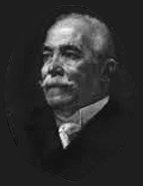

He was born in Ribandas , Goa, on 27 March 1854 and died in Lisbon on 10 June 1930 with the rank of retired cavalry colonel. He became a lecturer at the War Academy. After studying for the first few years in India, he came to Portugal due to the influence of the Count of S. Januário, governor of that territory at the time, and at the expense of a stipend from the Agricultural Chambers of Goa. The poet Tomás Ribeiro was the one who guided Cristóvão Aires in his first steps when he arrived in Portugal. When he was in the East, the author of D. Jaime had the occasion to appreciate the blossoming of his talent, which went on to give the country thousands of pages of national history, notably in the field of army studies.
Cristóvão Aires joined the 5 th Battalion of Hunters as a volunteer in November 1872, becoming a second lieutenant in 1876 and a colonel in 1911. He was transferred to the Army Reserve in 1913. He was married to Maria do Carmo, sister of the writer and poet Maria Am á lia Vaz de Carvalho. His family life with this writer brought him into contact with a literary salon that included prominent intellectuals of the time, such as Gonçalves Crespo. He completed the infantry and cavalry course at the Army School, where he was always honoured and belonged to the general staff of his branch . He then enrolled in the Undergraduate Degree in Arts and Humanities, achieving high grades in Literature, Philosophy , and History.
He became involved in politics , joined the Partido Regenerador [ Regeneratist Party ] and was elected a member of parliament three times. He held the positions of Civil Governor of Bragança and Public Prosecutor of the 2 nd War Council of the 1 st Division. His historical eulogy at the Academia das Ciências de Lisboa [ Lisbon Academy of Sciences ] was delivered by his successor, Professor Mosés Bensabat Amzalak .
This work is financed by national funds through FCT - Foundation for Science and Technology, I.P, in the scope of the projects UIDB/04311/2020 and UIDP/04311/2020.
